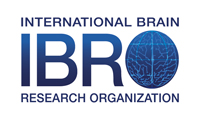
Photo from archive.org
The effects of aging are multifaceted including deleterious changes to the structure and function of the nervous system which often results in reduced mobility and quality of life. Turning while… Click to show full abstract
The effects of aging are multifaceted including deleterious changes to the structure and function of the nervous system which often results in reduced mobility and quality of life. Turning while walking (dynamic) and in-place (stable) are ubiquitous aspects of mobility and have substantial consequences if performed poorly. Further, turning is thought to require higher cortical control compared to bouts of straight-ahead walking. This study sought to understand how relative amounts of corticospinal inhibition as measured by transcranial magnetic stimulation and the cortical silent period within the primary motor cortices are associated with various turning characteristics in neurotypical young (YA) and older adults (OA). In the current study, OA had reduced peak turn velocity and increased turn duration for both dynamic and stable turns. Further, OA demonstrated significantly reduced corticospinal inhibition within the right motor cortex. Finally, all associations between corticospinal inhibition and turning performance were specific to the right hemisphere, reflecting that those OA who maintained high levels of inhibition performed turning similar to their younger counterparts. These results compliment the right hemisphere model of aging and lateralization specification of cortically regulated temporal measures of dynamic movement. While additional investigations are required, these pilot findings provide an additional understanding as to the neural control of dynamic movements.
Journal Title: Neuroscience
Year Published: 2020
Link to full text (if available)
Share on Social Media: Sign Up to like & get
recommendations!